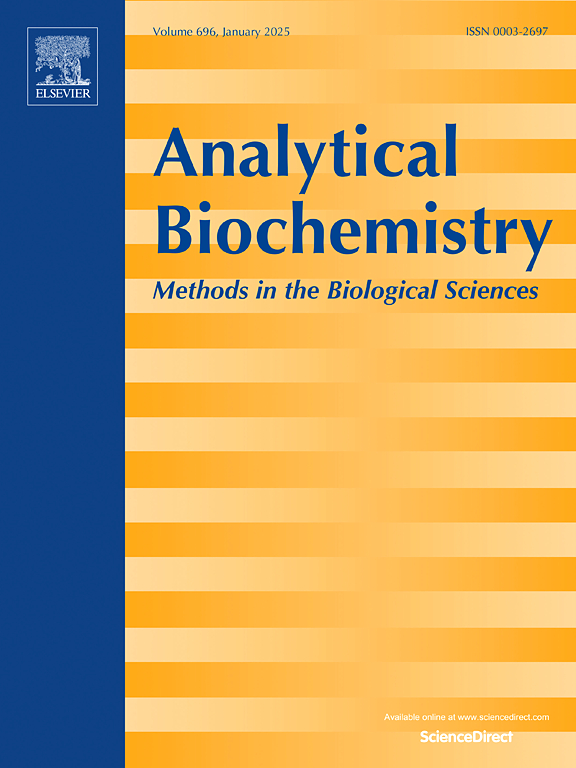Mechanism of DNA multimerization caused by strand-displacement DNA polymerases
IF 2.5
4区 生物学
Q2 BIOCHEMICAL RESEARCH METHODS
引用次数: 0
Abstract
It has been recently shown that for Bst DNA polymerase, the side isothermal amplification reaction named multimerization (MM) proceeds under certain conditions. MM hinders interpretation of amplification results and reduces the accuracy and reliability of DNA/RNA diagnostics. Here, the mechanism of MM caused by strand-displacement DNA polymerases is reported. The mechanism includes the following key stages: 1) envelopment of the enzyme globule by the synthesized DNA strand, facilitated by DNA breathing, 2) convergence of the 3′-ends of the DNA strands and pseudo-cyclic trigger DNA structure formation, 3) synthesis of the products with repeated motifs resulting in their expansion due to DNA slippage. Initiation of MM reaction occurs with extremely low probability, however, the resulting few trigger DNA structures are efficiently amplified and ultimately lead to the accumulation of nonspecific amplicons (multimers). Molecular models with certain steric and thermodynamic characteristics were used to confirm the proposed mechanism. The highest MM efficiency was observed for DNA templates and reaction conditions that facilitated DNA breathing, complete envelopment of the enzyme globule with DNA strands and convergence of their 3′-ends.

链置换DNA聚合酶引起DNA聚合的机制
最近的研究表明,对于Bst DNA聚合酶,在一定条件下进行称为多聚化(multierization, MM)的侧等温扩增反应。MM妨碍了对扩增结果的解释,降低了DNA/RNA诊断的准确性和可靠性。本文报道了DNA链置换聚合酶引起MM的机制。该机制包括以下关键阶段:1)合成的DNA链包裹酶球,DNA呼吸促进;2)DNA链3 '端趋同和伪环状触发DNA结构的形成;3)合成具有重复基序的产物,由于DNA滑动导致其膨胀。MM反应的启动概率极低,然而,产生的少数触发DNA结构被有效扩增,最终导致非特异性扩增子(多聚子)的积累。采用具有一定空间和热力学特征的分子模型来证实所提出的机理。在DNA模板和促进DNA呼吸的反应条件下,观察到最高的MM效率,DNA链完全包膜酶球及其3 '端收敛。
本文章由计算机程序翻译,如有差异,请以英文原文为准。
求助全文
约1分钟内获得全文
求助全文
来源期刊

Analytical biochemistry
生物-分析化学
CiteScore
5.70
自引率
0.00%
发文量
283
审稿时长
44 days
期刊介绍:
The journal''s title Analytical Biochemistry: Methods in the Biological Sciences declares its broad scope: methods for the basic biological sciences that include biochemistry, molecular genetics, cell biology, proteomics, immunology, bioinformatics and wherever the frontiers of research take the field.
The emphasis is on methods from the strictly analytical to the more preparative that would include novel approaches to protein purification as well as improvements in cell and organ culture. The actual techniques are equally inclusive ranging from aptamers to zymology.
The journal has been particularly active in:
-Analytical techniques for biological molecules-
Aptamer selection and utilization-
Biosensors-
Chromatography-
Cloning, sequencing and mutagenesis-
Electrochemical methods-
Electrophoresis-
Enzyme characterization methods-
Immunological approaches-
Mass spectrometry of proteins and nucleic acids-
Metabolomics-
Nano level techniques-
Optical spectroscopy in all its forms.
The journal is reluctant to include most drug and strictly clinical studies as there are more suitable publication platforms for these types of papers.
 求助内容:
求助内容: 应助结果提醒方式:
应助结果提醒方式:


